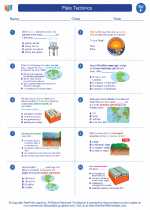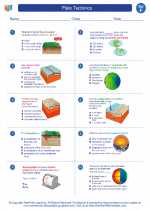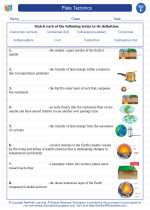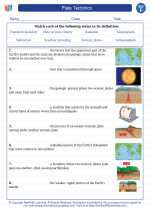Earth's Systems
Introduction
The Earth is a complex system with interconnected parts that work together to support life. These interconnected parts are known as Earth's systems. Understanding these systems is crucial for understanding the planet's processes and how they impact the environment.
Geosphere
The geosphere is the solid part of the Earth that includes the rocks, minerals, and landforms. It is made up of the crust, mantle, and core. The geosphere plays a crucial role in shaping the Earth's surface through processes like erosion, weathering, and plate tectonics.
Atmosphere
The atmosphere is the layer of gases that surrounds the Earth. It is composed of nitrogen, oxygen, carbon dioxide, and other trace gases. The atmosphere regulates the planet's temperature, protects it from harmful radiation, and influences weather patterns and climate.
Hydrosphere
The hydrosphere encompasses all of Earth's water, including oceans, rivers, lakes, glaciers, and groundwater. Water plays a vital role in shaping the Earth's surface through processes like erosion, weathering, and deposition. It also influences climate patterns and supports various ecosystems.
Biosphere
The biosphere includes all living organisms on Earth and their interactions with the other Earth systems. It encompasses various ecosystems, from forests to grasslands to coral reefs. The biosphere is interconnected with the other systems and plays a crucial role in regulating the planet's processes and maintaining life.
Interactions Between Systems
Earth's systems are interconnected, and the interactions between them are complex and dynamic. For example, the geosphere influences the hydrosphere through the shaping of landforms and the regulation of water flow. Similarly, the atmosphere interacts with the biosphere through processes like photosynthesis and respiration.
Study Tips
- Understand the different components of each Earth system and their roles.
- Learn about the interactions between the systems and how they influence each other.
- Explore real-world examples of how Earth's systems interact and impact the environment.
- Use diagrams and visuals to help visualize the complex relationships between the systems.
- Practice applying the concepts to different environmental scenarios to deepen your understanding.
◂Science Worksheets and Study Guides Sixth Grade. Plate Tectonics

 Worksheet/Answer key
Worksheet/Answer key
 Worksheet/Answer key
Worksheet/Answer key
 Vocabulary/Answer key
Vocabulary/Answer key
 Vocabulary/Answer key
Vocabulary/Answer key
 Vocabulary/Answer key
Vocabulary/Answer key
 Vocabulary/Answer key
Vocabulary/Answer key
